Announced in April, the Xperia 1 III is Sony’s latest flagship phone. Sony puts a lot of emphasis on the device’s imaging capabilities but with a Snapdragon 888 chipset, 6.5-inch 4K OLED display and 12GB of RAM the Xperia offers top-end specs all around. Content creators will also appreciate the microSD slot that can deal with cards of up to 1TB in capacity, as well as the dedicated shutter button.
The rear camera uses a 12 MP sensor in the primary module, next to a 12 MP ultra-wide with a 16mm equivalent focal length. The tele module uses a fairly unique design that allows the phone to switch between a 70 and 105mm lens with f/2.3 and f/2.8 apertures, respectively. In video mode, you can record clips in 4K resolution and a range of frame rates from 24fps for a cinema-like look all the way up to 120fps for slow-motion effects. Let’s see how the Sony Xperia 1 III fared in our DXOMARK Camera tests.
Key camera specifications:
- Primary: 12 MP 1/1,7″ sensor, 24mm equivalent f/1.7-aperture lens
- Ultra-wide: 12 MP 1/2.5″ sensor, 16mm equivalent f/2.2-aperture
- Tele: 12 MP 1/2.9″ sensor, 70/105mm equivalent, f/2.3/2.8-aperture
- LED-flash
- Video: 4K at 24/30/60/120 fps
About DXOMARK Camera tests: For scoring and analysis in our smartphone camera reviews, DXOMARK engineers capture and evaluate over 3000 test images and more than 2.5 hours of video both in controlled lab environments and in natural indoor and outdoor scenes, using the camera’s default settings. This article is designed to highlight the most important results of our testing. For more information about the DXOMARK Camera test protocol, click here. More details on how we score smartphone cameras are available here.
Test summary
Scoring
Sub-scores and attributes included in the calculations of the global score.
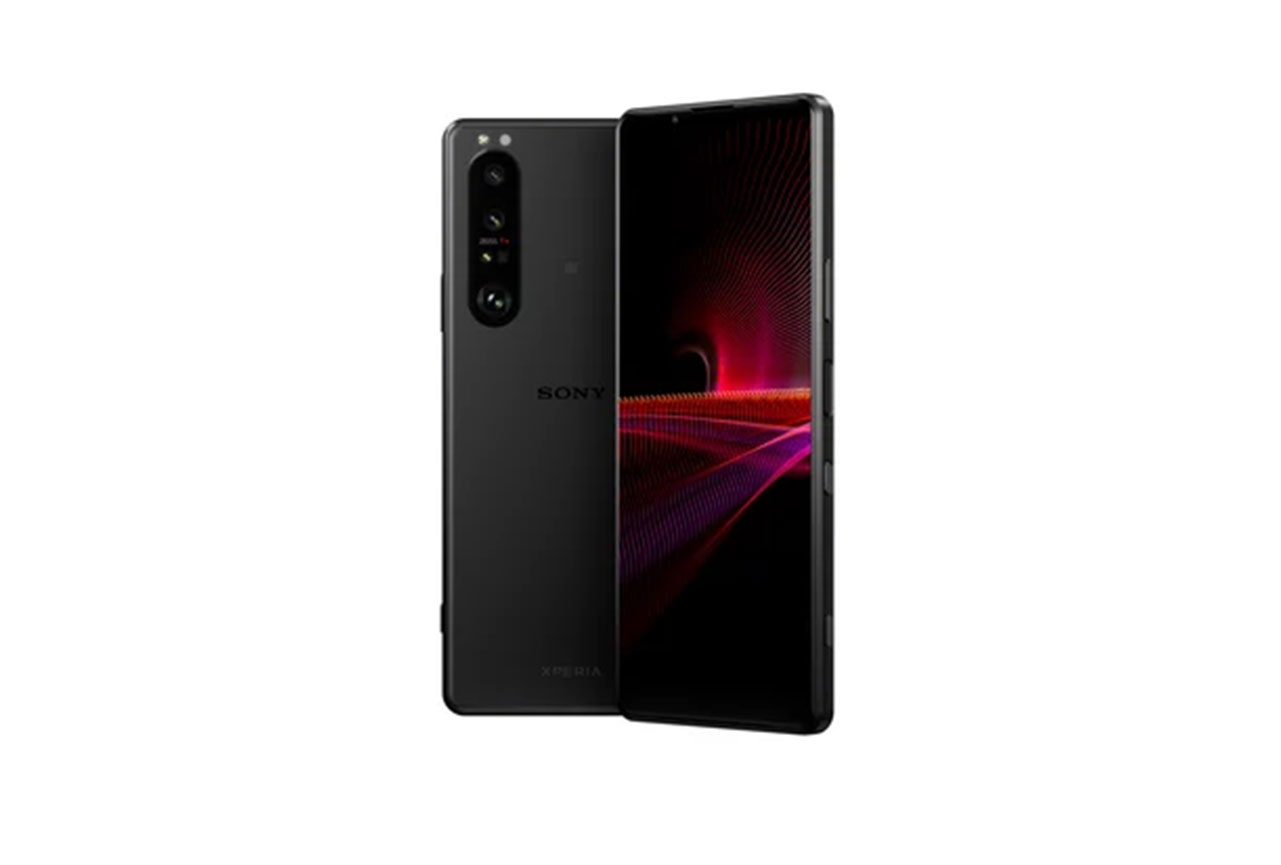 Sony Xperia 1 III
Sony Xperia 1 III

105
camera
89
Huawei Pura 70 Ultra
Best: Huawei Pura 70 Ultra (130)
95
Apple iPhone 16 Pro
Best: Apple iPhone 16 Pro (130)
91
Huawei Pura 70 Ultra
Best: Huawei Pura 70 Ultra (125)
86
Xiaomi 15 Ultra
Best: Xiaomi 15 Ultra (125)
104
Huawei Pura 70 Ultra
Best: Huawei Pura 70 Ultra (117)
62
Xiaomi Redmi 12 5G
Best: Xiaomi Redmi 12 5G (82)
60
Huawei Pura 70 Ultra
Best: Huawei Pura 70 Ultra (85)
57
Apple iPhone 16 Pro
Best: Apple iPhone 16 Pro (93)
79
Xiaomi 15 Ultra
Best: Xiaomi 15 Ultra (128)
85
Huawei Pura 70 Ultra
Best: Huawei Pura 70 Ultra (122)
68
Oppo Find X8 Pro
Best: Oppo Find X8 Pro (116)
84
Oppo Find X8 Pro
Best: Oppo Find X8 Pro (120)
62
Huawei Pura 70 Ultra
Best: Huawei Pura 70 Ultra (120)
97
Oppo Find X6 Pro
Best: Oppo Find X6 Pro (118)
107
Apple iPhone 16 Pro
Best: Apple iPhone 16 Pro (120)
82
Xiaomi 12S Ultra
Best: Xiaomi 12S Ultra (86)
103
Apple iPhone 16 Pro
Best: Apple iPhone 16 Pro (119)
Use cases & Conditions
Use case scores indicate the product performance in specific situations. They are not included in the overall score calculations.
Outdoor
Photos & videos shot in bright light conditions (≥1000 lux)
Indoor
Photos & videos shot in good lighting conditions (≥100lux)
Lowlight
Photos & videos shot in low lighting conditions (<100 lux)
Friends & Family
Portrait and group photo & videos
Please be aware that beyond this point, we have not modified the initial test results. While data and products remain fully comparable, you might encounter mentions and references to the previous scores.
Position in Global Ranking

152
nd
4. Apple iPhone 16 Pro Max
157
10. Apple iPhone 15 Pro Max
154
22. Honor Magic4 Ultimate
147
26. Apple iPhone 14 Pro Max
146
26. Motorola Edge 50 Ultra
146
26. Samsung Galaxy S25 Ultra
146
32. Samsung Galaxy S24 Ultra
144
34. Apple iPhone 13 Pro Max
141
34. Google Pixel 9 Pro Fold
141
38. Samsung Galaxy S23 Ultra
140
43. Tecno Camon 40 Pro 5G
138
45. Vivo X80 Pro (Snapdragon)
137
52. Samsung Galaxy S22 Ultra (Snapdragon)
135
52. Vivo X80 Pro (MediaTek)
135
59. Samsung Galaxy Z Fold6
133
59. Samsung Galaxy S24+ (Exynos)
133
59. Samsung Galaxy S24 FE
133
59. Samsung Galaxy S24 (Exynos)
133
69. Samsung Galaxy Z Flip6
132
70. Apple iPhone 12 Pro Max
131
70. Samsung Galaxy S22 Ultra (Exynos)
131
81. Samsung Galaxy Z Fold5
128
83. Asus Smartphone for Snapdragon Insiders
127
83. Samsung Galaxy Z Flip5
127
83. Samsung Galaxy S23 FE
127
88. Vivo X70 Pro (MediaTek)
126
92. Asus Zenfone 11 Ultra
125
92. Samsung Galaxy S22+ (Exynos)
125
97. Samsung Galaxy Z Fold4
124
100. Apple iPhone 11 Pro Max
122
105. Xiaomi Redmi Note 13 Pro Plus 5G
121
106. Samsung Galaxy Z Fold3 5G
120
106. Samsung Galaxy S22 (Exynos)
120
106. Xiaomi Redmi Note 13 Pro 5G
120
111. Xiaomi Redmi Note 14 Pro+ 5G
118
114. Apple iPhone 12 mini
117
114. Samsung Galaxy S21 Ultra 5G (Snapdragon)
117
114. Samsung Galaxy S21 FE 5G (Snapdragon)
117
114. Samsung Galaxy S21 5G (Snapdragon)
117
120. Vivo X60 Pro 5G (Snapdragon)
116
123. Motorola Edge 50 Neo
115
123. Samsung Galaxy S21+ 5G (Snapdragon)
115
123. Samsung Galaxy S21 Ultra 5G (Exynos)
115
133. Crosscall Stellar-X5
113
133. Xiaomi Redmi Note 12 Pro+ 5G
113
137. Samsung Galaxy Z Flip4
112
139. Samsung Galaxy Z Flip3 5G
111
139. Samsung Galaxy S21+ 5G (Exynos)
111
139. Samsung Galaxy S21 5G (Exynos)
111
144. Samsung Galaxy A55 5G
108
144. Vivo X60 Pro 5G (Exynos)
108
149. Samsung Galaxy A54 5G
107
150. Xiaomi Redmi Note 14 Pro 5G
106
153. Samsung Galaxy A35 5G
104
154. Motorola Edge 40 Neo
103
154. Xiaomi Redmi Note 14 5G
103
156. Xiaomi Redmi Note 12 Pro 5G
102
158. Motorola Edge 30 Pro
101
160. Apple iPhone SE (2022)
100
162. Motorola Moto g75 5G
96
168. Samsung Galaxy A34 5G
92
168. Samsung Galaxy A25 5G
92
172. Xiaomi Redmi Note 13 5G
91
174. Motorola Moto g85 5G
88
174. Samsung Galaxy A52s 5G
88
174. Samsung Galaxy A52 5G
88
178. Motorola moto g54 5G
85
178. Samsung Galaxy A33 5G
85
178. Samsung Galaxy A16 LTE
85
181. Honor Magic6 Lite (5300 mAh)
84
181. Xiaomi Redmi Note 14
84
184. Samsung Galaxy A15 5G
83
186. Samsung Galaxy A15 LTE
81
187. Samsung Galaxy A53 5G
79
189. Xiaomi Redmi Note 11 Pro 5G
78
191. Samsung Galaxy A16 5G
77
193. Motorola Moto G35 5G
75
193. Xiaomi Redmi Note 13
75
196. Honor Magic5 Lite 5G
74
198. Samsung Galaxy A23 5G
70
199. Xiaomi Redmi Note 12 5G
69
202. Motorola moto g34 5G
67
202. Samsung Galaxy A14 5G
67
204. Motorola Moto G62 5G
66
205. Xiaomi Redmi Note 11S 5G
65
207. Xiaomi Redmi Note 12
63
212. Honor Magic4 Lite 5G
61
214. Xiaomi Redmi Note 11
60
216. Crosscall Stellar-M6
59
223. Xiaomi Redmi 10 2022
51
225. Samsung Galaxy A22 5G
48
Position in Ultra-Premium Ranking

93
rd
4. Apple iPhone 16 Pro Max
157
10. Apple iPhone 15 Pro Max
154
20. Honor Magic4 Ultimate
147
23. Apple iPhone 14 Pro Max
146
23. Motorola Edge 50 Ultra
146
23. Samsung Galaxy S25 Ultra
146
28. Samsung Galaxy S24 Ultra
144
30. Apple iPhone 13 Pro Max
141
30. Google Pixel 9 Pro Fold
141
34. Samsung Galaxy S23 Ultra
140
38. Vivo X80 Pro (Snapdragon)
137
43. Samsung Galaxy S22 Ultra (Snapdragon)
135
43. Vivo X80 Pro (MediaTek)
135
48. Samsung Galaxy Z Fold6
133
48. Samsung Galaxy S24+ (Exynos)
133
53. Samsung Galaxy Z Flip6
132
54. Apple iPhone 12 Pro Max
131
54. Samsung Galaxy S22 Ultra (Exynos)
131
61. Samsung Galaxy Z Fold5
128
63. Asus Smartphone for Snapdragon Insiders
127
63. Samsung Galaxy Z Flip5
127
68. Asus Zenfone 11 Ultra
125
68. Samsung Galaxy S22+ (Exynos)
125
71. Samsung Galaxy Z Fold4
124
73. Apple iPhone 11 Pro Max
122
76. Samsung Galaxy Z Fold3 5G
120
81. Samsung Galaxy S21 Ultra 5G (Snapdragon)
117
83. Samsung Galaxy S21+ 5G (Snapdragon)
115
83. Samsung Galaxy S21 Ultra 5G (Exynos)
115
89. Samsung Galaxy Z Flip4
112
90. Samsung Galaxy Z Flip3 5G
111
90. Samsung Galaxy S21+ 5G (Exynos)
111
Pros
- Good exposure on primary camera
- Consistent white balance across consecutive shots
- Preview image close to final capture
- Smooth exposure transitions and nice color in bright light video
- Low noise in bright light and indoor video
Cons
- Limited dynamic range results in highlight clipping in photo and video
- Slight noise in all conditions
- Autofocus failures and inconsistencies across consecutive shots and in video
- Lack of fine detail
- Fusion artifacts
- Inconsistent exposure on ultra-wide camera, underexposure on medium and long range tele shots
- Inaccurate skin tones in indoor and low light videos
- Noise and lack of detail in low light video
With a DXOMARK Camera score of 115, the Sony Xperia 1 III places itself in the lower ranks of all the Ultra Premium devices we have tested, but thanks to a better tele zoom, the Xperia 1 III is a slight improvement over its predecessor, the Xperia 1 II.
If there’s not too much contrast in the scene, the Xperia 1 III captures images with a fairly wide dynamic range and nice colors.
Photos captured with the Sony show natural color and are well exposed, but a lack of dynamic range means that in high-contrast scenes highlight areas are often clipped. The autofocus performed well in the lab, but we found it to be slightly inconsistent across consecutive shots, with instabilities and some AF failures.
Sony Xperia 1 III, crop: strong fusion artifacts
Samsung Galaxy S21 Ultra (Snapdragon)
Samsung Galaxy S21 Ultra (Snapdragon), crop: no fusion artifacts
The level of detail is generally low compared to its flagship rivals, with very fine detail being lost. A slight luminance noise is noticeable in most conditions as well and fusion artifacts can result in blurry areas in the frame.
Texture comparison: The Xperia 1 III’s texture levels are noticeably lower than on the S21 Ultra.
In bokeh mode, depth estimation is mostly accurate, but some errors can be visible under closer inspection. Detail is pretty good and spotlights in the background are rendered nicely.
Sony Xperia 1 III, bokeh mode
Sony Xperia 1 III, crop: spotlights in the background are nicely shapes with good contrast
The preview image on the display is very close to the final capture in terms of exposure and dynamic range, giving you a good idea of what to expect when you press the shutter button.
Sony Xperia 1 III, preview image is usually close to final capture in default mode
Sony Xperia 1 III, capture
When using the Sony’s tele zoom, our testers often observed underexposed images at medium and long-range settings. On the ultra-wide camera, exposure can be unstable across consecutive shots when shooting in bright light or under typical indoor light conditions.
Sony Xperia 1 III, long range tele
Sony Xperia 1 III, crop: underexposure
Video clips recorded on the Sony Sony Xperia 1 III are nicely exposed in bright light but, like for stills, dynamic range is fairly limited. Color rendering is quite accurate in bright light, but color casts make an appearance in indoor and low-light videos. Skin tones especially are rendered inaccurately in dim conditions. Compared to other flagship phones, the video autofocus is more unstable and detail is lost in indoor and low-light recordings.
Sony Xperia 1 III, acceptable exposure level but limited dynamic range, AF instabilities, acceptable texture and low noise, color cast on skin tones
Samsung Galaxy S21 Ultra 5G (Snapdragon),
accurate target exposure and rather extended dynamic range, AF instabilities, accurate color rendering, acceptable texture with visible noise
In this video comparison to the predecessor Xperia 1 II we can see that the new model’s stabilization has improved. Both camera motion and frameshifts are more noticeable on the Xperia 1 II than on the III. On the other hand the Xperia II does a better job in terms of autofocus. The sample clip from the new phone shows several instances of refocusing.
Sony Xperia 1 III, good stabilization but autofocus instabilities
Sony Xperia 1 II, less effective stabilization but more stable autofocus



 152nd
152nd 93rd
93rd

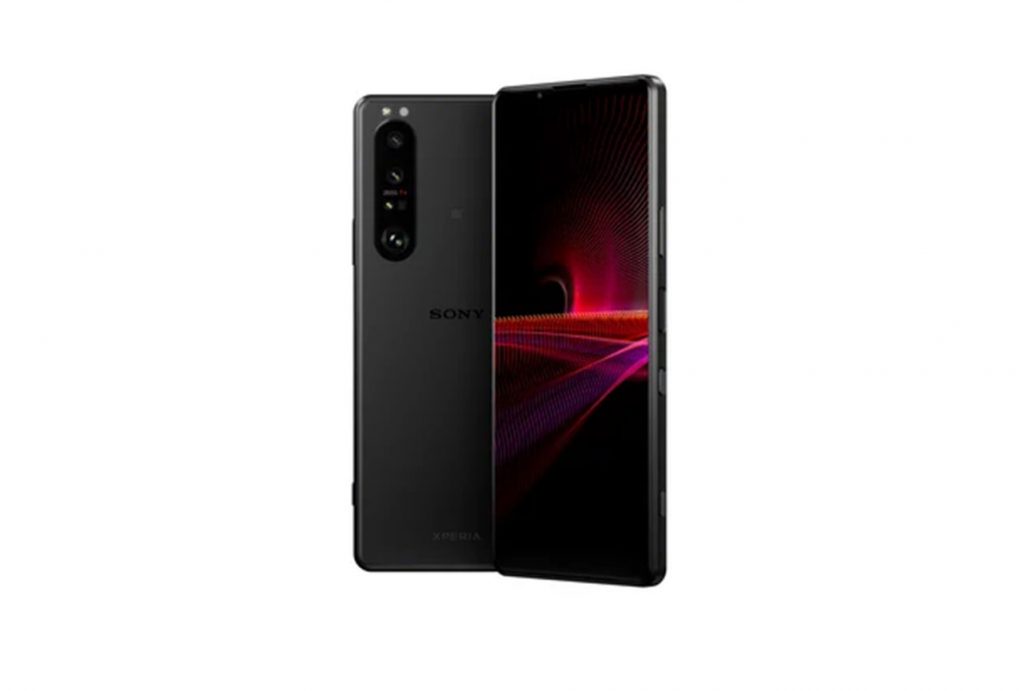



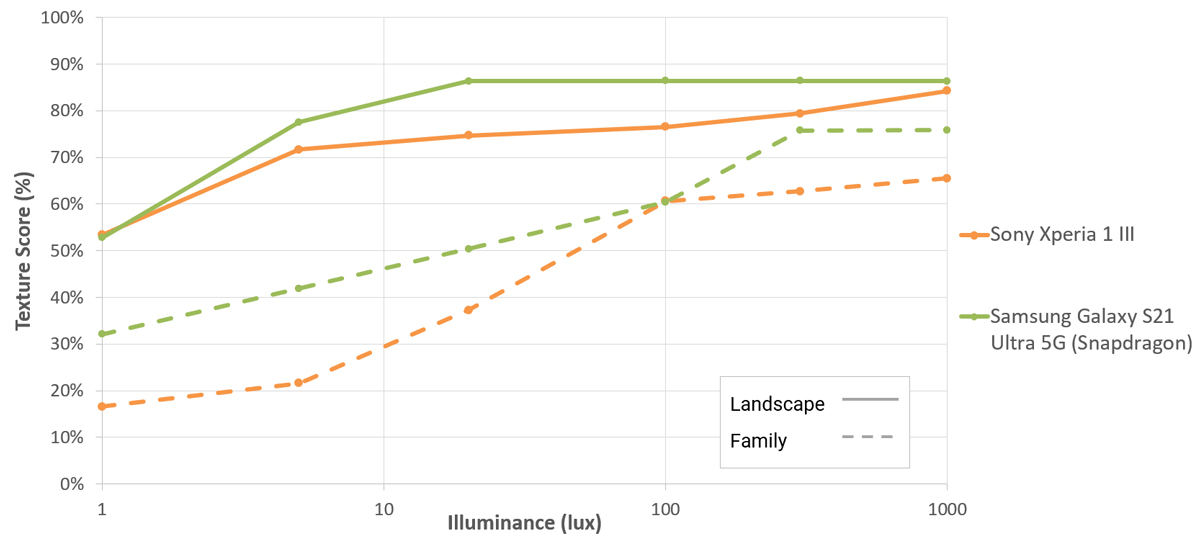

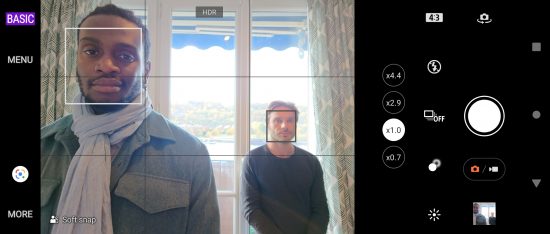

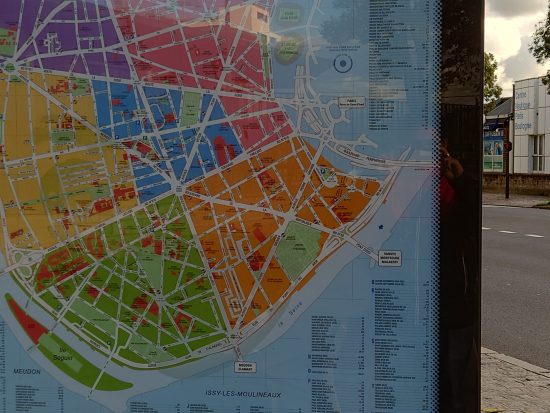
DXOMARK encourages its readers to share comments on the articles. To read or post comments, Disqus cookies are required. Change your Cookies Preferences and read more about our Comment Policy.